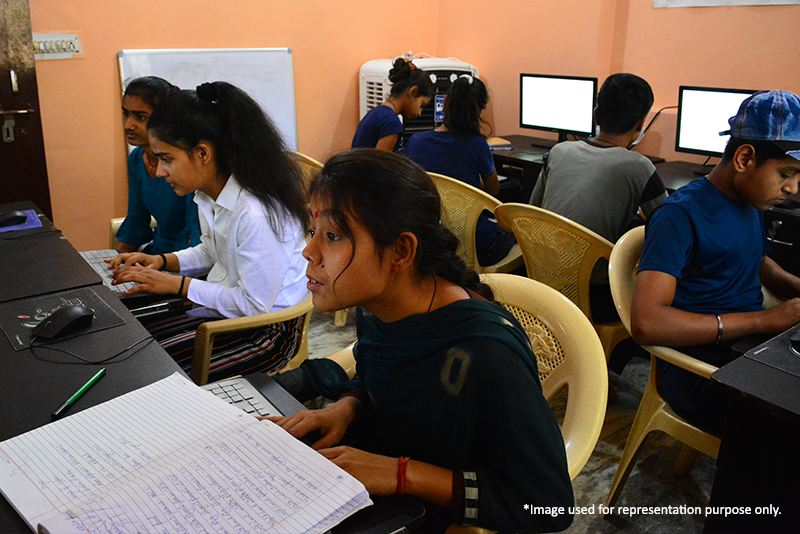
Empowering underserved children through skill-based education
In developing countries, traditional education emphasises theory over practical skills due to limited resources. This reliance on rote learning l....
Read More
The rise of the digital age has made innovation and technology central to our everyday lives. Driven by this shift, a strong foundation in STEM education is becoming increasingly important. While theories and formulas are essential for understanding the world of science and technology, fostering practical knowledge and problem-solving skills from a young age is equally crucial for children to thrive in future. This is where STEM education steps in to nurture children's natural curiosity and build a strong foundation with hands-on learning.
In this blog, we explore the advantages of STEM-based learning, and how CRY UK is helping children from underserved communities access this quality education.
What is STEM education
STEM education is a teaching approach that integrates Science, Technology, Engineering, and Mathematics (STEM) to equip children with the knowledge and skills needed to solve problems, interpret information, and critically evaluate evidence for informed decision-making.
Benefits of STEM education

The importance of STEM education in early childhood lies in its ability to develop essential skills that last a lifetime. By engaging with STEM activities early, children learn to ask questions, investigate how things work, think critically, and navigate through challenges. The key benefits of STEM education are:
Cognitive thinking and problem solving
STEM based learning encourage children to think independently and find solutions. Simple STEM projects, like designing a basic water filtration system, equip children with critical thinking and problem-solving skills. By experimenting, analysing, and innovating, they not only strengthen their cognitive abilities but also learn to tackle real-life challenges in underserved communities, such as access to clean drinking water.
Fosters innovation and creativity
STEM fosters a spirit of innovation by encouraging children to test ideas without fear of failure. For instance, when children are challenged to create a low-cost solar-powered light using basic materials, they learn to experiment, troubleshoot, and innovate. This not only teaches them the fundamentals of renewable energy but also equips them to solve real problems like electricity shortages in underserved communities, nurturing creativity, resilience, and practical problem-solving skills.
Collaboration and Communication
While books are often preferred to be read in isolation, STEM learning becomes far more effective through collaboration, as it often requires teamwork. It helps children learn to share ideas, listen to others, and work toward a common goal. For instance, when children work together to design a simple rainwater harvesting system for their school or community, they not only learn the importance of clear communication and teamwork but also see firsthand how collective problem-solving can create real impact.
Future readiness
STEM education equips children with essential skills for the future, preparing them for tomorrow's workforce. By tackling real-world challenges, like designing a simple health tracker or creating a learning app, children develop critical thinking, creativity, and technical abilities. These hands-on projects not only build practical skills but also help them address issues in their communities, such as improving access to education or healthcare.
India’s progress in adapting STEM and challenges that remain
India has made significant progress in integrating STEM education into its academic landscape. With support from charities and government initiatives like the Atal Innovation Mission (AIM), over 10,000 STEM labs have been established across the country, engaging more than 1.1 crore students in hands-on learning experiences. (AIM Government of India 2025 Impact Report).
However, despite these commendable efforts, challenges persist:
CRY UK’s role in fostering skill-based quality education

While implementing STEM education remains a real challenge especially in underserved communities due to lack of resources, skilled manpower, and financial constraints, CRY UK continues to empower children through skill-based, hands-on learning. Their approach not only nurtures creativity but also inspires children to become future innovators and change-makers, uplifting their own communities and beyond through curiosity and experimentation.
Conclusion
STEM based learning empowers underserved children to become future-ready, equipping them with skills to solve real-world problems in their communities. The journey is ongoing, and with support from donors like you, charities like CRY UK can continue providing these impactful learning opportunities.
Together, we can help children become innovators and changemakers, shaping a brighter future for all. Donate now and help children create lasting change in their communities and beyond.